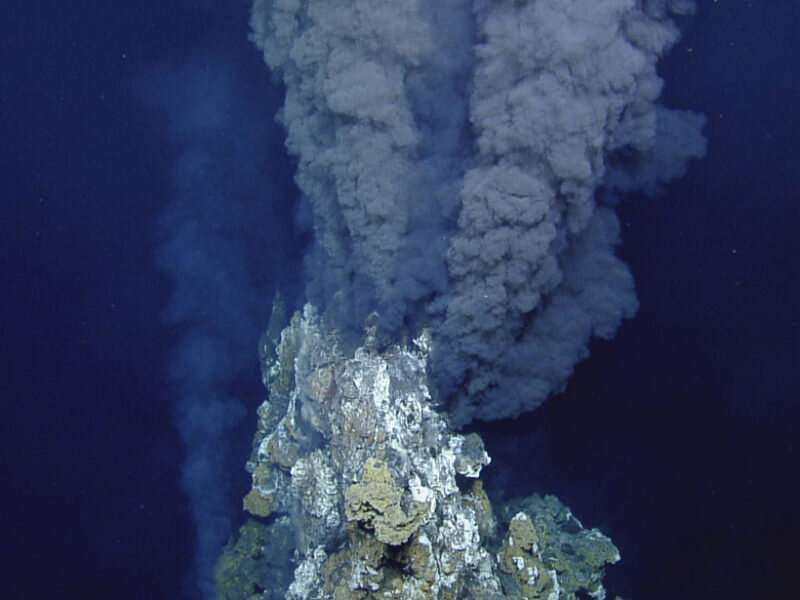Hydrothermal vents may add ancient carbon to ocean waters

Earth's oceans play a pivotal role in the global carbon cycle. As seawater moves and mixes, it stores and transports huge amounts of carbon in the form of dissolved organic and inorganic carbon molecules. However, the various sources and fates of marine dissolved organic carbon (DOC) are complex, and much remains to be learned about its dynamics—especially as climate change progresses.
Carbon isotope ratios can help determine the age of DOC, which gives clues to its source and journey through the carbon cycle. Photosynthetic organisms in surface waters are thought to produce most marine DOC, but radiocarbon dating shows that marine DOC is thousands of years old, so more information is needed to clarify how it mixes and lingers in the ocean.
Relying on radiocarbon dating of seawater samples collected during a research cruise in 2016–2017, Druffel et al. provide new insights into DOC dynamics in the eastern Pacific and Southern Oceans. Their investigation lends support to a hypothesis that hydrothermal vents could be an important source of DOC in this region.
While traveling south aboard NOAA's R/V Ronald H. Brown, the researchers collected seawater samples at multiple sites, including from a station near Antarctica to a site off the Pacific Northwest. Parts of their path followed the East Pacific Rise, a key area of hydrothermal activity off the west coast of South America.
Radiocarbon dating of the samples enabled construction of a profile of isotopic ratios found in both DOC and dissolved inorganic carbon (DIC) at various depths for each site studied. Analysis of these profiles showed that both forms of dissolved carbon age similarly as they are transported northward in deep waters. According to the authors, this suggests that northward transport is the main factor controlling the isotopic composition of both DOC and DIC in these deep waters.
Meanwhile, the radiocarbon data indicate that hydrothermal vents associated with the East Pacific Rise may contribute ancient DOC to ocean waters. In line with earlier research, the findings suggest the possibility that chemoautotrophic microbes at these vents may "eat" DIC from ancient sources, converting it into DOC that is released into the ocean.
Further research will be needed to confirm whether hydrothermal vents indeed contribute significant amounts of ancient DOC to seawater, affecting its isotopic composition. If so, models of global ocean circulation may need to be adjusted to account for that contribution.
More information: Ellen R. M. Druffel et al, Dissolved Organic Radiocarbon in the Eastern Pacific and Southern Oceans, Geophysical Research Letters (2021). DOI: 10.1029/2021GL092904
Journal information: Geophysical Research Letters
Provided by American Geophysical Union
This story is republished courtesy of Eos, hosted by the American Geophysical Union. Read the original story here.



















